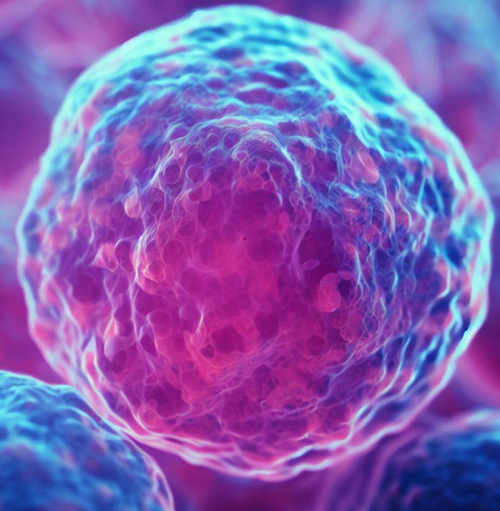Diffuse large b cell lymphoma germinal center type Symptoms, Causes, Prognosis, Treatment
Diffuse large B-cell lymphoma (DLBCL) is a type of non-Hodgkin lymphoma, a blood cancer that develops in the lymphatic system. DLBCL is the most frequent subtype of non-Hodgkin lymphoma, accounting for 30% of cases. There are various subtypes of DLBCL, including the Germinal Center (GC) type.
What is Diffuse Large B Cell Germinal Center Type Lymphoma?
DLBCL Germinal Center type referred to a specific classification of DLBCL based on the origin of the malignant B-cells. B-cells are a specific type of white blood cell that are responsible for of creating antibodies, which are essential for the immune response. The Germinal Center type gets its name from the germinal center, which is a specific location within lymph nodes where B-cells mature and proliferate in response to infection or immunization.

Prevalence
The median age at diagnosis for DLBCL is 65. It can affect any age group. DLBCL is more likely to develop in men than in women. A significant majority of DLBCL cases are of the Germinal Center type, which exhibits unique clinical and molecular features.
Causes
The precise cause of DLBCL Germinal Center type is still unknown. Genetic changes and mutations in B-cells are thought to contribute to its development. Immunodeficiency, autoimmune diseases, Epstein-Barr virus, and chemical or radiation exposure are risk factors for DLBCL.
Symptoms
DLBCL GC type frequently exhibits generalized symptoms such enlarged lymph nodes, fever, night sweats, exhaustion, and unexplained weight loss. Numerous tests are used to make a diagnosis, such as blood testing, imaging, biopsy, and molecular analysis.
Classification
The most effective treatment strategy must be determined by accurately classifying DLBCL into its subtypes, including the Germinal Center type.
Based on molecular and genetic traits, Diffuse Large B Cell Lymphoma (DLBCL) can be divided into various subtypes. The two most prevalent subtypes of DLBCL are activated B-cell-like (ABC) and germinal center B-cell-like (GCB).
Staging
In patients with DLBCL Germinal Center Type, staging aids in evaluating the degree of cancer dissemination. When staging a tumor, factors such lymph node involvement, tumor size and location, and whether the cancer has spread to other organs are taken into account.
Depending on the degree of cancer spread, the DLBCL Germinal Center Type is categorized into 4 stages (Stage I to Stage IV). Stage I denotes localized cancer in one area of the lymph nodes, whereas Stage IV denotes broad spreading to multiple organs.
Prognosis
The stage of the disease, the patient's age, and the patient's general condition all have a role in the prognosis of Diffuse Large B Cell Germininal Center (DLBCL) germinal center type.
According to a Journal of Clinical Oncology study, DLBCL germinal center type patients had a median survival of 59.2 months. The median remission time for R-CHOP patients was 2 years, compared to 1.25 years for other chemotherapy regimens.
According to the National Cancer Institute, 64.6% of DLBCL patients survive five years following diagnosis. The prognosis is often better for patients with DLBCL germinal center type than for those with non-germinal center/activated B-cell type.
Treatment
Chemotherapy, frequently in conjunction with immunotherapy, is the main form of treatment for DLBCL GC type. To target specific cancer cells, targeted medicines such monoclonal antibodies may also be used.
Managing DLBCL GC Type:
To reduce medication adverse effects and improve patients' quality of life, supportive care practices are used in the management of DLBCL GC type. For complete patient care, a multidisciplinary strategy involving healthcare providers is essential.
Recent Advances in DLBCL Treatment
CAR T-cell therapy, which includes altering the patient's immune cells to specifically target cancer cells, is one of the most recent developments in the treatment of DLBCL. To adapt treatment based on the patient's particular genetic profile, personalized medicine alternatives are also being investigated.
R-CHOP in combination with other drugs like lenalidomide or ibrutinib is one of the novel therapeutic options being investigated in several randomized studies for DLBCL.
These combinations seem to have potential, but phase III trials are required to assess their effectiveness and toxicity. In some cases, more demanding regimens like R-CHOP combined with etoposide may be explored.
DLBCL patients now have a variety of treatment options, including chimeric antigen receptor (CAR) T-cell therapy and high-dose chemotherapy used in conjunction with autologous hematopoietic stem cell transplantation.
 Reviewed by Simon Albert
on
July 28, 2023
Rating:
Reviewed by Simon Albert
on
July 28, 2023
Rating:











